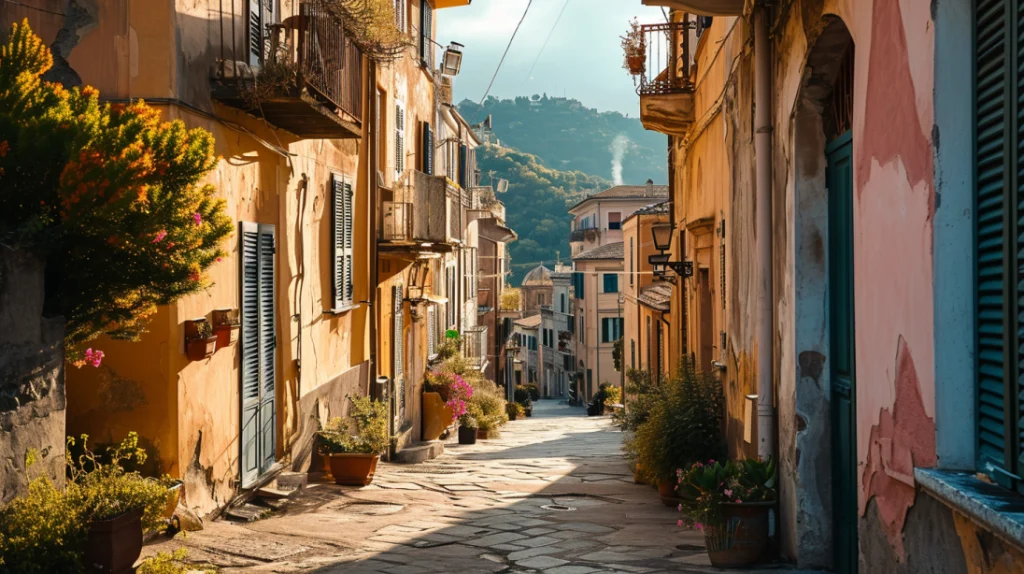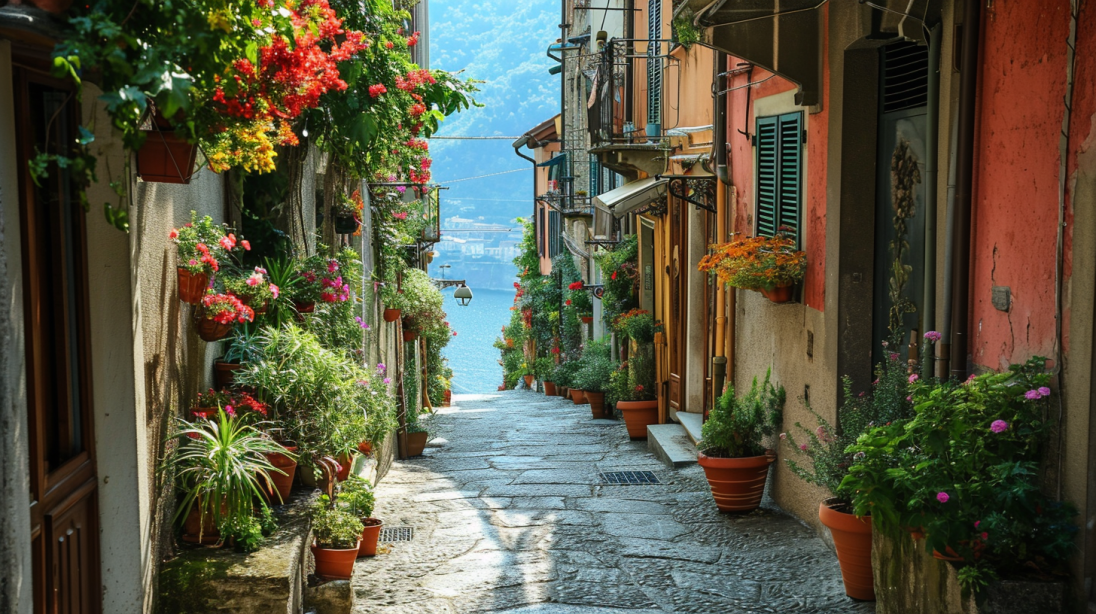Are you ready to uncover the irresistible charm of Italy? From exploring its vibrant culture to soaking in picturesque landscapes, embarking on a journey to Italy promises a truly enriching experience. Whether you’re seeking historical richness, breathtaking vistas, or culinary marvels, this travel guide to Italy is your ultimate companion in unraveling the boot-shaped nation’s allure. So, let’s dive in and discover the best ways to make your Italian adventure an absolute corker!
What is the best month to travel to Italy?
Planning a jaunt to Italy? Aim for April to June, mate! Springtime down under there means prime conditions for exploring: just-right weather, and the crowds haven’t yet swelled to their summer peaks. You’ll catch the countryside at its most picturesque, with a burst of life after winter’s chill. It’s the perfect scene for your Italian escape!
Should I go to Amalfi Coast or Sicily?
If you’re passionate about historical exploration and yearn to wander amongst ancient artefacts and ruins, Sicily is your go-to destination over the Amalfi Coast. As you traverse this captivating island, you’ll encounter a tapestry of archaeological sites and monuments, each narrating the tales of civilizations long past. The Amalfi Coast, with its breathtaking vistas, does offer a glimpse into history, but Sicily truly is a treasure trove for the historically inclined, boasting a diverse collection of remnants from various epochs. Whether it’s the Valley of the Temples or the ancient theatres of Syracuse, Sicily will satiate your appetite for historical adventures.
What is the prettiest month in Italy?
May stands out as the most picturesque time to visit Italy, mate. With pleasant warmth sans the scorching heat, you’ll dodge the tourist hordes and still catch gardens bursting into vibrant life, making it ideal for exploring the nation’s rich tapestry of culture and history. A blooming gem, it’s an absolute corker of a time for a holiday! More info

How many days do I need in Italy?
For a cracking trip to Italy, where you’re keen on soaking up the spectacular vistas, historic landmarks, and dolce vita, you’d be well advised to set aside a week to ten days. This span gives you a fair go at experiencing the quintessential Italian holiday, complete with a side trip to lesser-known gems and a taste of the outdoor marvels that this European hotspot serves up. From the Roman relics in the Eternal City to the Renaissance treasures in Florence and the canals of Venice, this timeframe allows you to dive headfirst into Italian culture, cuisine, and charisma!
How much money do I need for 1 week in Italy?
G’day! If you’re looking to explore the beautiful landscapes and rich culture of Italy for a week, your budget will need to accommodate your unique travel needs. For those keen on doing things on the cheap, you might be looking at shelling out approximately 800 to 1000 euros for the basics. If you’re angling for a bit more comfort without going all out, then a bit of a step up to about 1500 to 2000 euros should cover you. But if you’re planning to live it up and enjoy the luxe side of Italian life, then you’ll want to budget for over 3000 euros to truly indulge. Remember, this covers everything from your accommodating stay, scrumptious Italian dining, transport to various iconic sights, and any experiences you choose to add to your adventure. So, pack your passion for Italy and get ready for a magnificent journey!
What is the cheapest month to go to Italy?
The cheapest time for an Italian holiday is typically during the shoulder season, which falls between March and May as well as from September to November. This period offers a tantalising blend of milder weather and more affordable travel options, letting you explore Italy’s cultural richness and scenic landscapes without the peak season prices. If you can time your visit towards the late spring, you could even enjoy the warmer climes without splashing out too much dosh! More info
What is the rainy season in Italy?
Italy’s wettest period generally stretches from the tail end of October right through to January. You might also encounter April showers, signalling the start of spring. During the winter, snowfall is common in elevated regions such as the Alps, the towering Apennine range, and even atop Mount Etna in Sicily. So, when plotting your Italian voyage, pack an umbrella if you’re visiting during these months, just to be on the safe side! More info
How do I plan my first trip to Italy?
Planning your inaugural journey to the boot-shaped nation involves a sequence of steps to ensure a trip as smooth as the country’s famed gelato. Start by setting your travel dates and budget to shape your holiday canvas. Dive into some initial exploration and groundwork, getting a taste for the regions and experiences that pique your interest. Once you’re well-versed with Italy’s allure, cement your travel map by confirming the stops on your itinerary.
With the skeleton of your tour in place, secure your flights, cross-country transport, and travel insurance – your safety net as you roam through storied Italian landscapes. Next, tally up places to stay, from charming B&Bs to luxurious villas. Don’t leave transportation to chance; whether hiring a Vespa to zip through cities or booking train tickets to traverse the countryside, have your conveyance sorted.
Finally, amplify your expedition by booking into attractions, and orchestrating tours and activities, ensuring you soak in the vibrant culture, from Renaissance art to vineyard tours. Your voyage to Italy awaits, promising a tapestry of culinary delights, historical treasures, and la dolce vita!
Where should I go to Italy for the first time?
If you’re keen to immerse yourself in history and culture on your visit to the boot-shaped nation, Rome is your go-to destination. Stepping into the Eternal City is like walking onto a live history book where ancient tales unfold at every corner. From the towering Colosseum to the majestic Vatican City, Rome is a treasure trove for enthusiasts eager to experience Italy’s rich heritage firsthand. So, grab your sunnies and a gelato for an unforgettable journey through time in this storied metropolis.
What is the best city to visit in Italy for the first time?
For a premier Italian getaway, Rome is unmissable, with its enchanting mix of historical sites and vibrant street life. Immerse yourself in ancient architecture at the Colosseum, feel the legacy of the Roman Empire at the Forum, and witness historic grandeur at the Pantheon. These iconic landmarks, alongside the sprawling Palatino, make Rome an exquisite starting point for any Italian journey.
Is it easy to tour Italy on your own?
Touring Italy independently is quite manageable, with its excellent network of trains, coaches, and roadways connecting diverse regions. For a seamless journey, a bit of pre-trip organisation can go a long way. If you fancy mingling, consider jumping aboard an escorted tour for a jaunt around Italy’s hotspots, where local guides can enrich your adventure with their insider knowledge.
What is the best way to travel around Italy?
Exploring Italy via train is top-notch, particularly for hitting up major cities such as Rome, Florence, and Venice. Their rail system has a smashing mix of high-speed and regional services linking the buzzing metropolis zones with the charming, smaller towns. It’s a bonzer choice for travellers keen on soaking in the scenic routes without the fuss of driving. Mate, jumping on a train is a dead-set convenient way to immerse yourself in the Italian journey while skipping over the traffic snarls.
What is the cheapest way to travel inside Italy?
Crikey, if you’re after a budget-friendly jaunt through Italy, you can’t go past their public transport network, mate. Trains, buses, and ferries will zip you from the canals of Venice to the historic streets of Rome without breaking the bank. Reckon you’ll fork out a few euros, say about €1.50 to a fiver for a single ride, depending on where you are. Or grab a daily travel card for roughly €4 to €15, and you’ll be sorted for unlimited rides. It’s the best way to explore this stunning destination, hands down!
Is it better to travel by train or car in Italy?
Hopping on a train in Italy often gets you around quickly, and for a decent price, especially if you’re stickin’ to the main cities or regions where the tracks are as plenty as gelato shops on a hot day in Rome. But if you’re keen to explore the hidden gems—those tucked-away vineyards or dreamy hilltop towns—then you might want a car under ya. It lets you wander well off the beaten path, away from the stations and into the heart of Italy’s countryside. Just remember, while steering your own course, that narrow roads and parking in historic centres can be a bit of a headache. So, whether you’re a fan of the railways offering scenic journeys through the Italian landscape, or you favour the freedom of the open road, Italy’s got the lot to make your journey a ripper. More info
Is it better to drive around Italy or train?
Travelling by train across Italy is a brilliant choice if you’re keen to dodge the stress of navigating the roads. It’s a ripper way to take in the stunning landscapes without the worry of dodgy parking spots or the antics of local motorists. Kick back, sip on some splendid regional vino, and soak up the vistas rolling by your carriage window. Plus, you’ll be hopping from one iconic city to the next with ease, truly a smart way to traverse the Italian boot.
Conclusion
So, mate, if you’re off to Italy, why not plan your jaunt for a ripper time in April to June? That’s when the place is a picture-perfect gem to explore, with just-right weather and fewer crowds than in summer. It’s the bees’ knees for feasting your eyes on Italy’s breathtaking countryside. And if you’re all about soaking up history, then head to Sicily, buddy. This island is chockers with ancient digs and ruins that’ll leave you chuffed. And for the prettiest month, set your sights on May, when the land bursts into full bloom.
When it comes to how long to stay, reckon a week to ten days gives you a fair dinkum taste of what Italy’s got to offer. Fancy a spend? Well, it might set you back between 800 to 3000 euros, depending on your fancy. If you’re a savvy spender, planning the shoulder season from March to May or September to November works a treat. But watch out for the rain. The months of October through January can see a fair bit of the wet stuff!
And when you start planning, make sure to book your flights, sort out somewhere to kip, and have your transport all tucked up. But most importantly, be ready for a trip of a lifetime in Italy, packed with history, scenery, and some fair dinkum good times, mate!


Stay connected